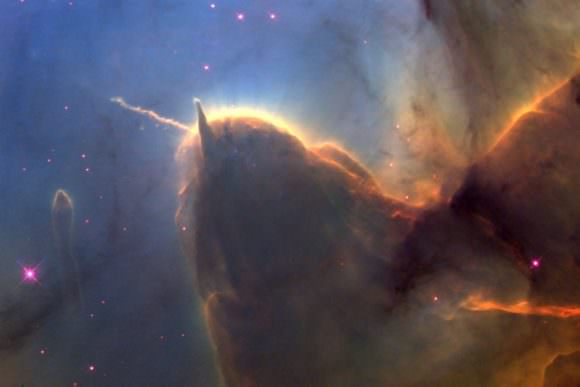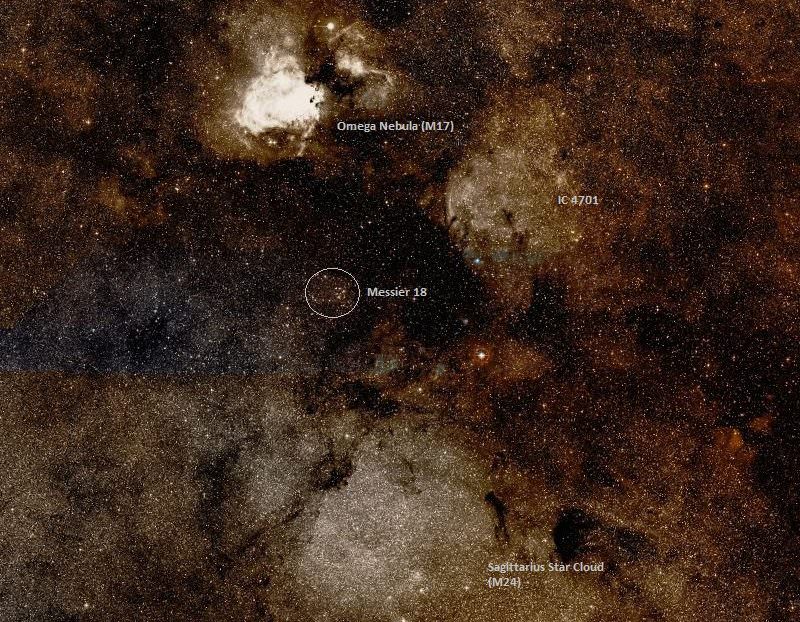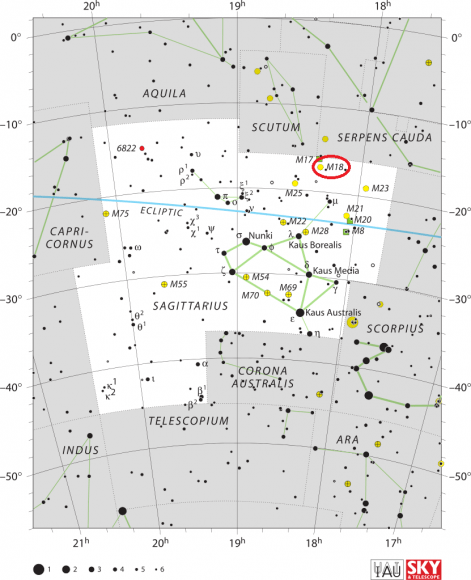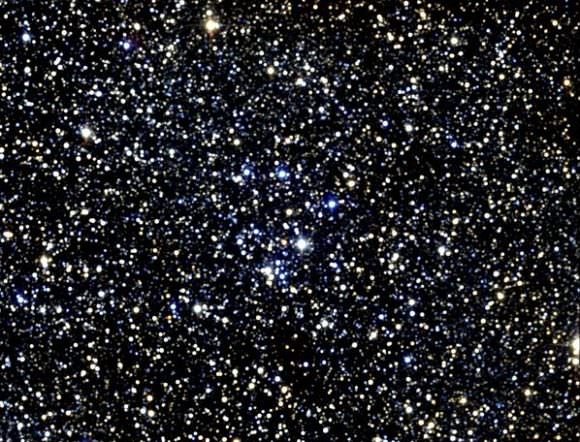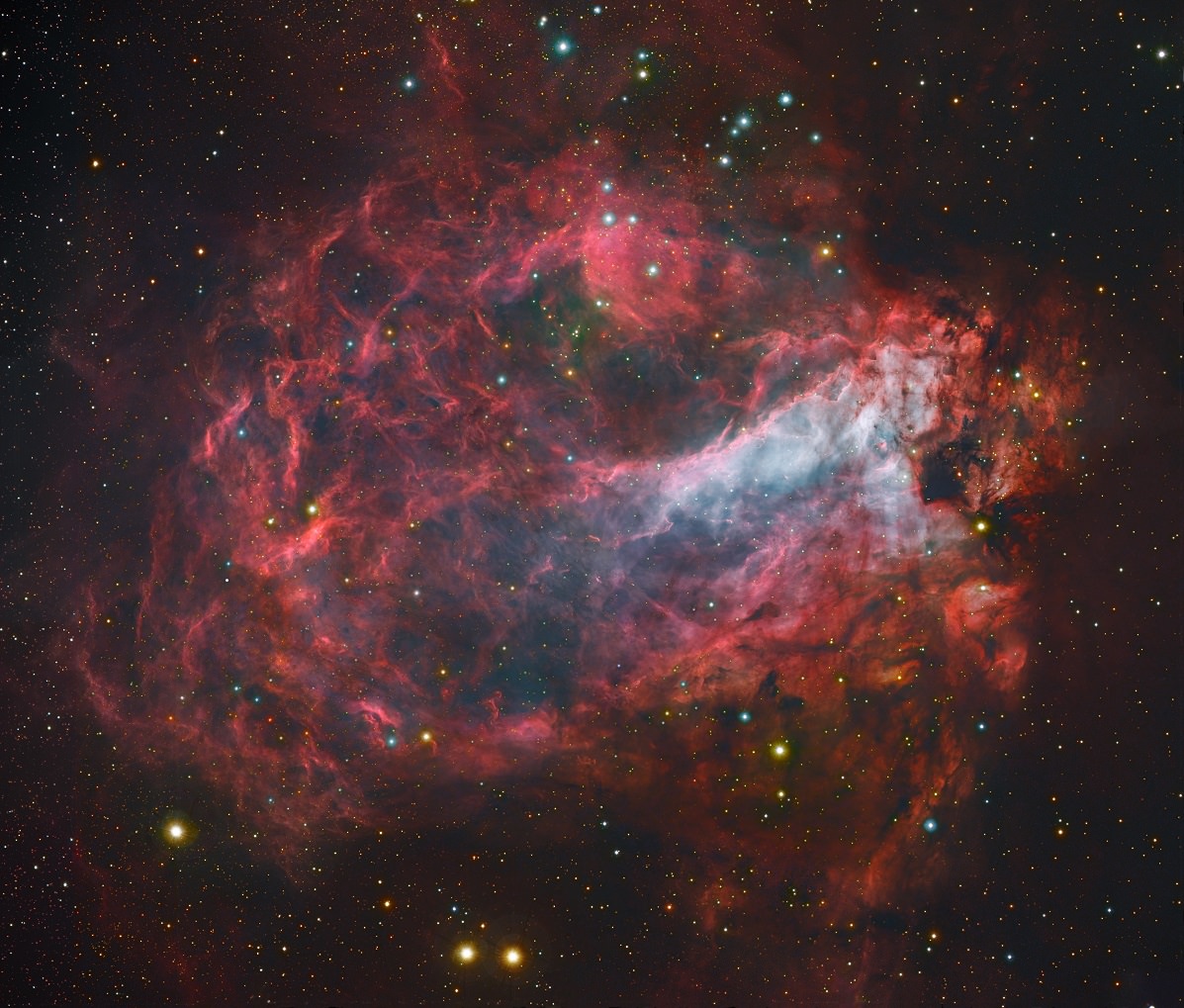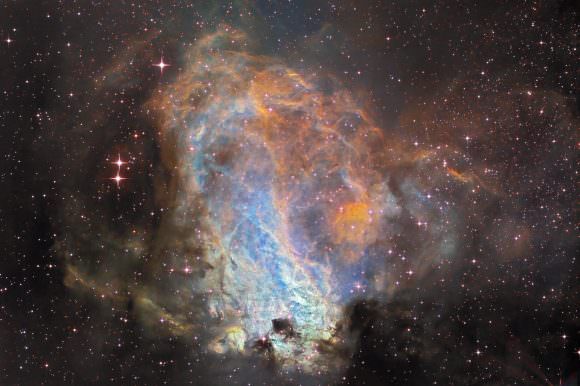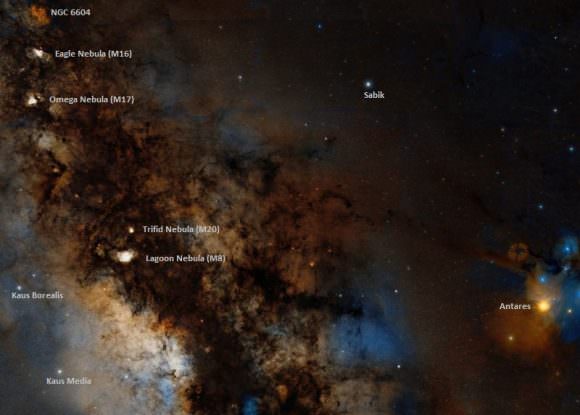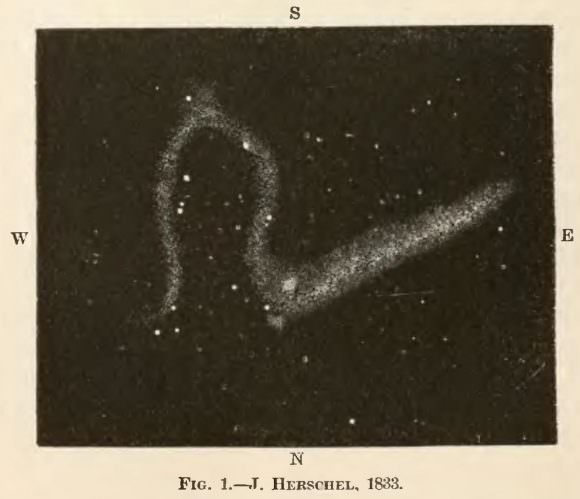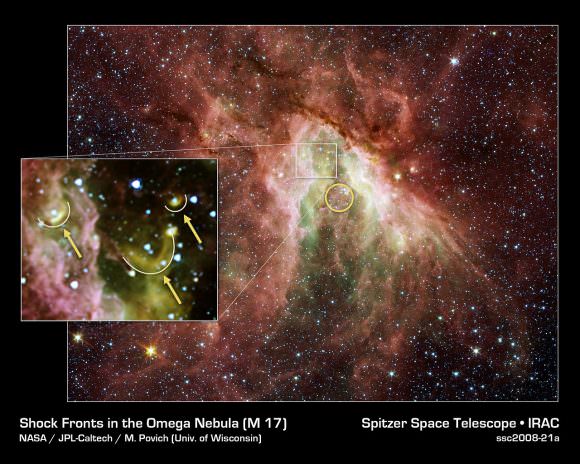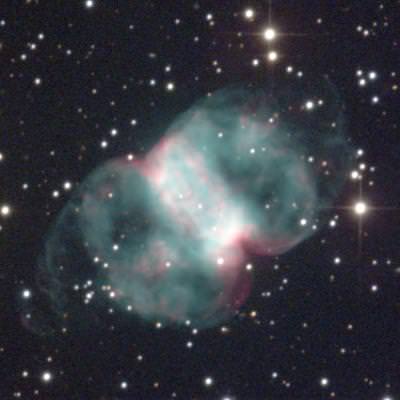Welcome back to Messier Monday! In our ongoing tribute to the great Tammy Plotner, we take a look at Messier 26 open star cluster. Enjoy!
Back in the 18th century, famed French astronomer Charles Messier noted the presence of several “nebulous objects” in the night sky. Having originally mistaken them for comets, he began compiling a list of these objects so that others wouldn’t make the same mistake. Consisting of 100 objects, the Messier Catalog would come to be viewed by posterity as a major milestone in the study of Deep Space Objects.
One of these objects is Messier 26, an open star cluster located about 5,000 light years from the Earth in the direction of the Scutum Constellation. While somewhat faint compared to other objects that share its section of the sky, this star field remains a source of mystery to astronomers, thanks to what appears to be a low-density star field at its nucleus.
Description:
When this cloud of stars formed some 89 million years ago, it was probably far more compact than today’s size of a 22 light year span. At a happy distance of about 5,000 light years from our solar system, we can’t quite see into the nucleus to determine just how dense it may actually be because of an obscuring cloud of interstellar matter.
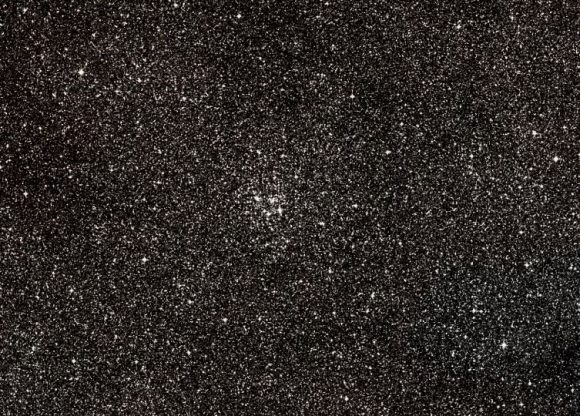
However, we do know a little bit about the stars contained within it. As astronomer James Cuffey suggested in a paper titled “The Galactic Clusters NGC 6649 and NGC 6694“, which appeared in July 1940 issue of The Astrophysical Journal:
“The relations between color and apparent magnitude show that NGC 6694 contains a well-defined main sequence and a slight indication of a giant branch. A zone of low star density 3′ from the center of NGC 6694 is noted. The ratio between general and selective absorption is estimated from the available data on red color indices in obscured clusters. Although uncertain in many cases, the results tend to confirm the ratio predicted by the law of scattering.”
However boring a field of stars may look upon first encounter, studies are important to our understanding how our galaxy evolved and the timeline incurred. As Kayla Young of the Manhasset Science Research team said:
“Star Clusters are unique because all of the stars in the cluster essentially have the same age and are roughly the same distance from Earth. Therefore, the purpose was to determine if a correlation exists between mean absolute magnitude and age of a star cluster. The absolute magnitude for star cluster NGC 6694 was calculated to be about 1.34 + .9. Using the B-V (Photometric Analysis) data ages were also calculated. After a scatter plot was created, the line of best fit demonstrated an exponential relation between the age and absolute magnitude.”
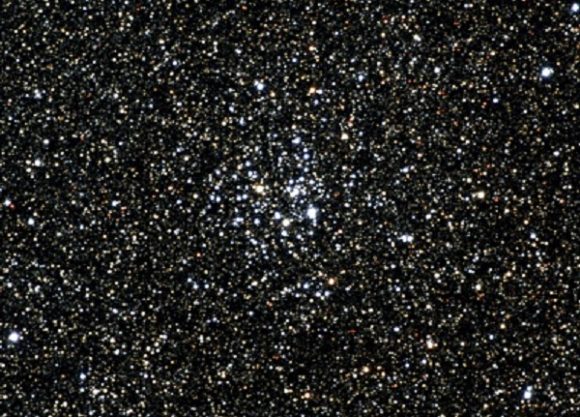
History of Observation:
Messier 26 was first observed by Charles Messier himself on June 20th, 1764. As he wrote of the discovery at the time:
“I discovered another cluster of stars near Eta and Omicron in Antinous [now Alpha and Delta Scuti] among which there is one which is brighter than the others: with a refractor of three feet, it is not possible to distinguish them, it requires to employ a strong instrument: I saw them very well with a Gregorian telescope which magnified 104 times: among them one doesn’t see any nebulosity, but with a refractor of 3 feet and a half, these stars don’t appear individually, but in the form of a nebula; the diameter of that cluster may be 2 minutes of arc. I have determined its position with regard to the star o of Antinous, its right ascension is 278d 5′ 25″, and its declination 9d 38′ 14″ south.”
Later, Bode would report a few stars with nebulosity – a field that simply wouldn’t resolve to his telescope. William Herschel would spare it but only a brief glance, saying: “A cluster of scattered stars, not rich.” While John Herschel would later go on to class it with its NGC designation, it was Admiral Smyth who would most aptly describe M26 for the true galactic cluster we know it to be. As he wrote upon viewing it in April of 1835:
“A small and coarse, but bright, cluster of stars, preceding the left foot of Antinous, in a fine condensed part of the Milky Way; and it follows 2 Aquilae by only a half degree. The principle members of this group lie nearly in a vertical position with the equatorial line, and the place is that of a small pair in the south, or upper portion of the field [in telescope]. This neat double star is of the 9th and 10th magnitudes, with an angle [PA] = 48 deg, and is followed by an 8th [mag star], the largest [brightest] in the assemblage, by 4s. Altogether the object is pretty, and must, from all analogy, possess affinity among its various components; but the collocation and adjustment of these wondrous firmamental clusters, and their probable distances, almost stun our present faculties. There are many astral splashes in this crowded district of the Galaxy, among which fine specimens of what may be termed luminiferous ether, are met with.”
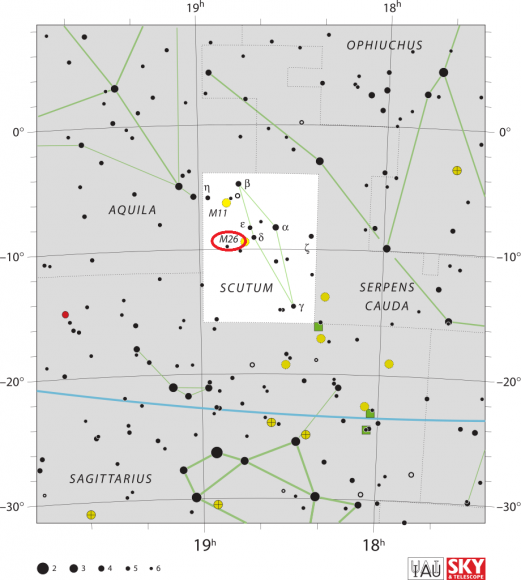
Locating Messier 26:
Finding Messier 26 in binoculars is easy as far as location goes – but not so easy distinguishing it from the starfield. Begin with the constellation of Aquila and its brightest star – Alpha. As you move southwest, count the stars down the Eagle’s back. When you reach three you are at the boundary of the constellation of Scutum. While maps make Scutum’s stars appear easy to find, they really aren’t.
The next most easily distinguished star in the line in Alpha Scutii. Aim your binoculars or finderscope there and you’ll see northern Epsilon and southern Delta to the east. Messier 26 is slightly southeast of Delta and will appear as a slight compression in the starfield, and you will be able to resolve a few individual stars to larger ones. Using a finderscope, it will appear as a very vague brightening – perhaps not seen at all depending on your finder’s aperture.
In even a small telescope, however, you’ll be pleased with what you see! Medium magnification will light up this 8th magnitude galactic star cluster and mid-sized instruments will fully resolve it. Power up! See how many stars you can – and can’t – resolve in this dusty, curtained, distant beauty!
And here are the quick facts to help you on your way!
Object Name: Messier 26
Alternative Designations: M26, NGC 6694
Object Type: Open Galactic Star Cluster
Constellation: Scutum
Right Ascension: 18 : 45.2 (h:m)
Declination: -09 : 24 (deg:m)
Distance: 5.0 (kly)
Visual Brightness: 8.0 (mag)
Apparent Dimension: 15.0 (arc min)
We have written many interesting articles about Messier Objects here at Universe Today. Here’s Tammy Plotner’s Introduction to the Messier Objects, , M1 – The Crab Nebula, M8 – The Lagoon Nebula, and David Dickison’s articles on the 2013 and 2014 Messier Marathons.
Be to sure to check out our complete Messier Catalog. And for more information, check out the SEDS Messier Database.
Sources:

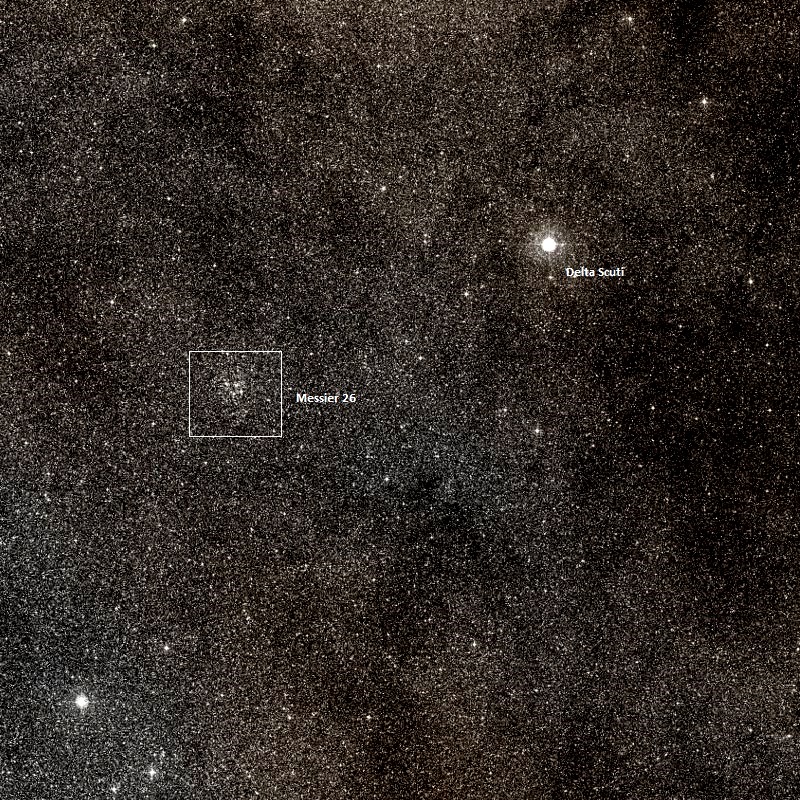
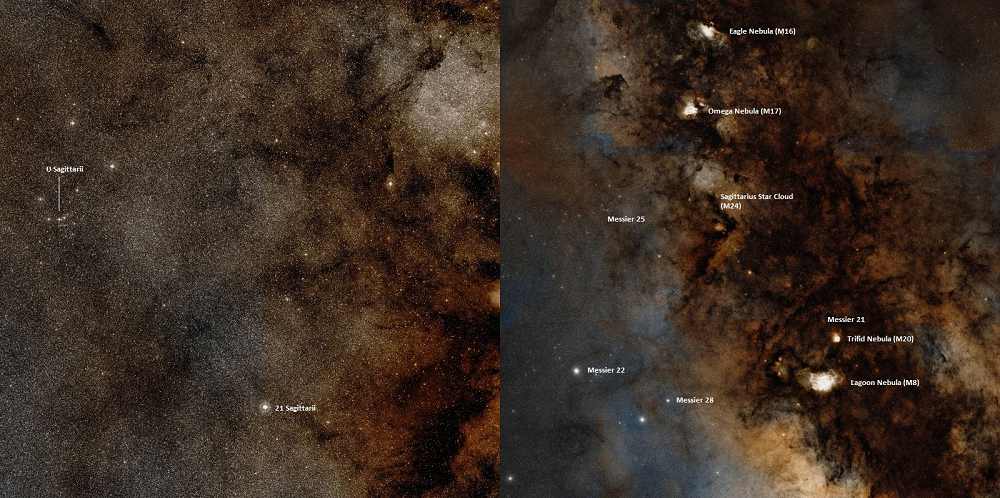
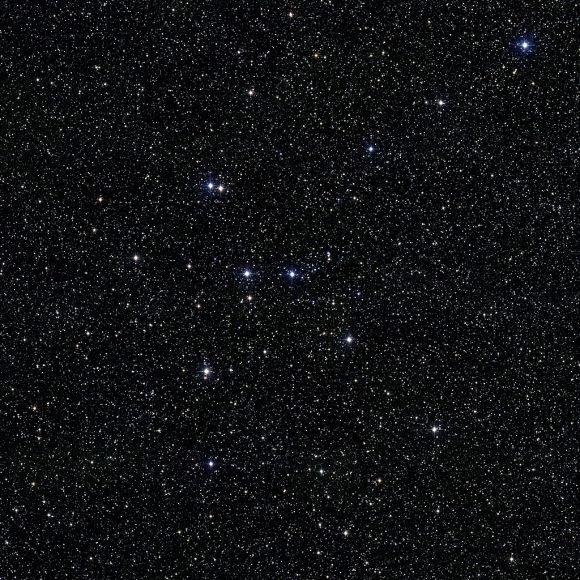
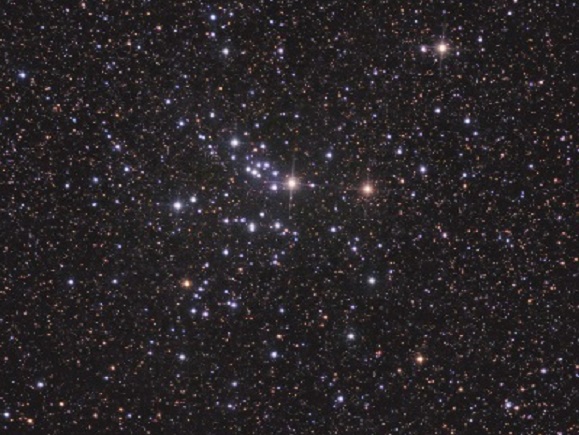
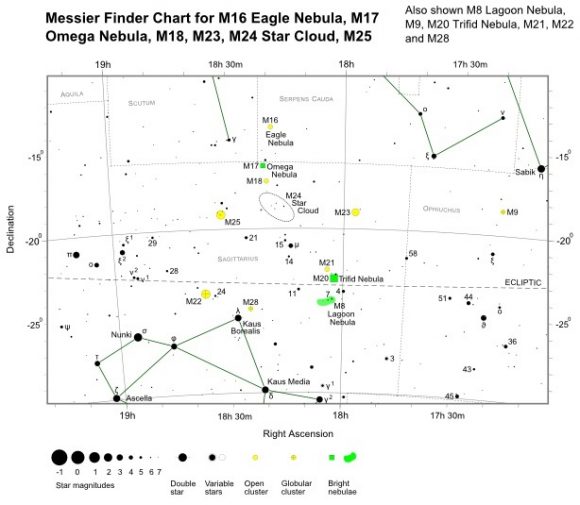
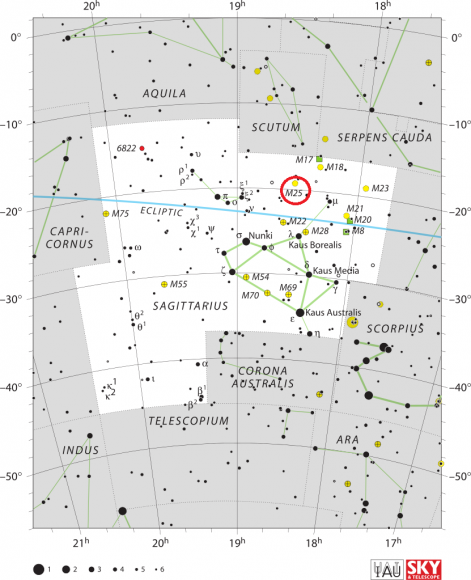
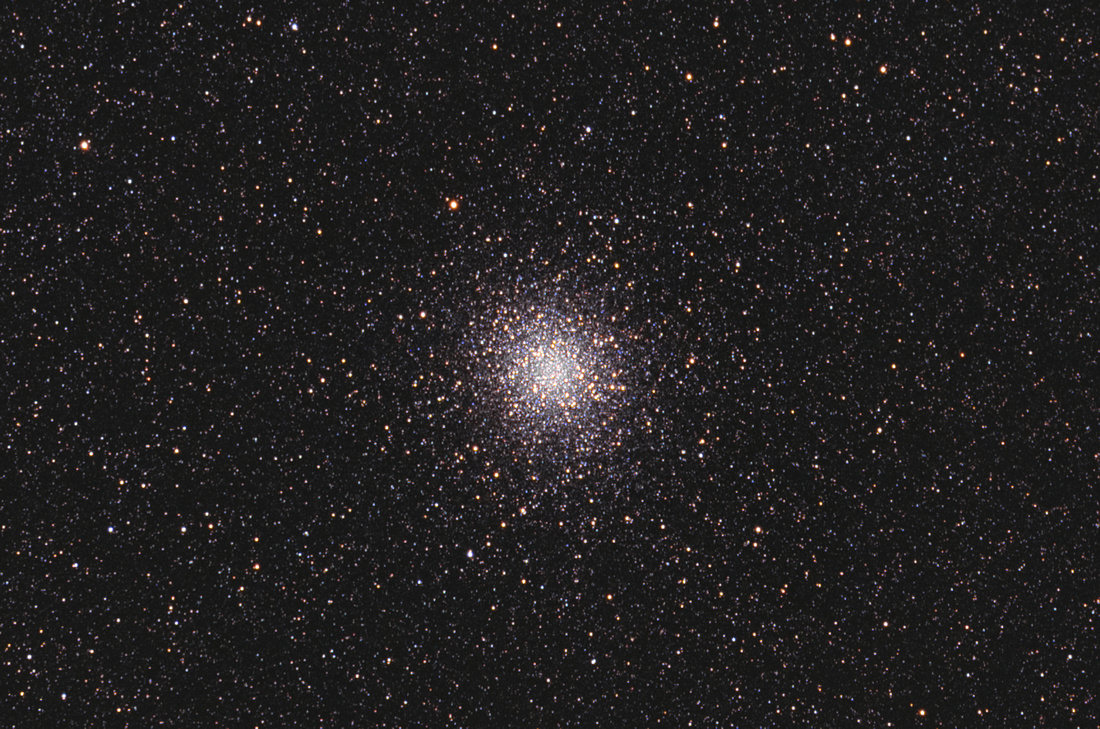
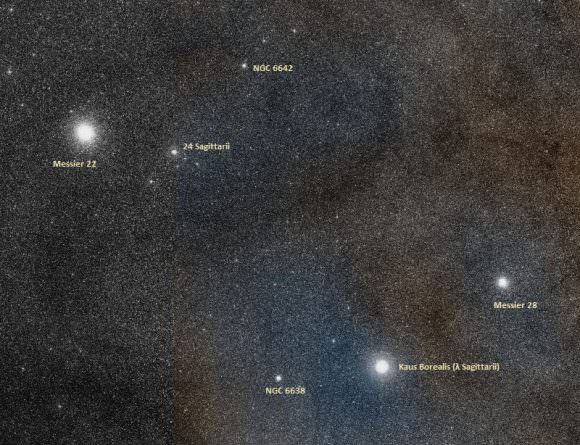
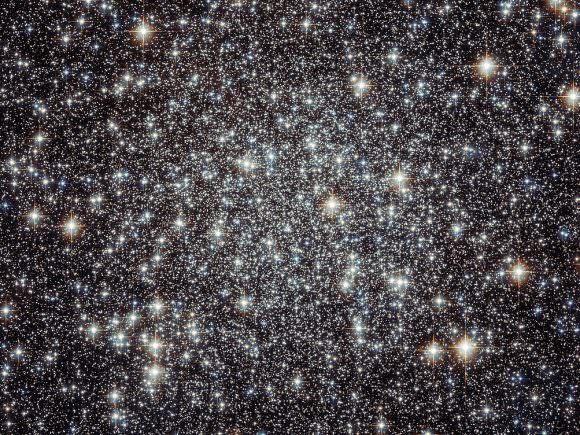
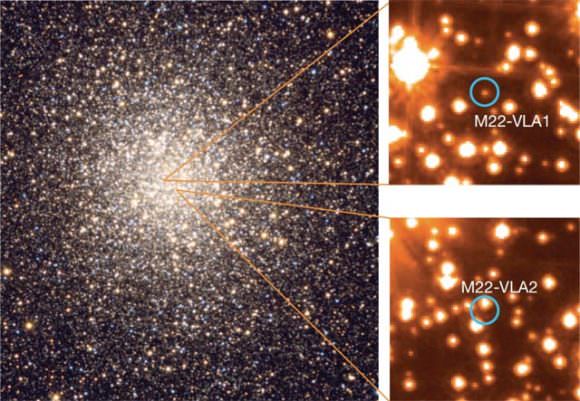
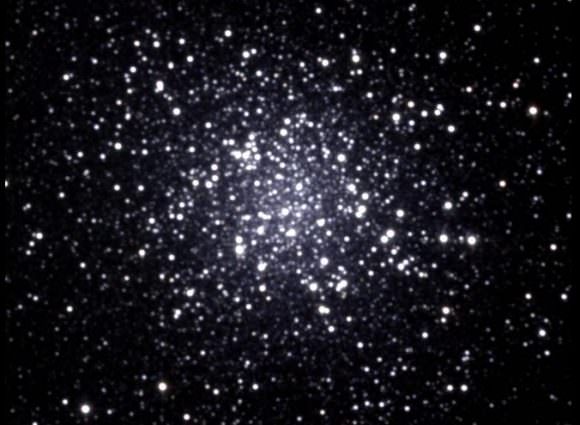
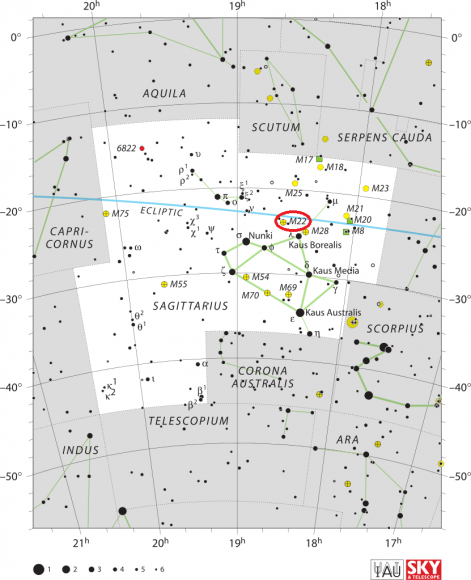
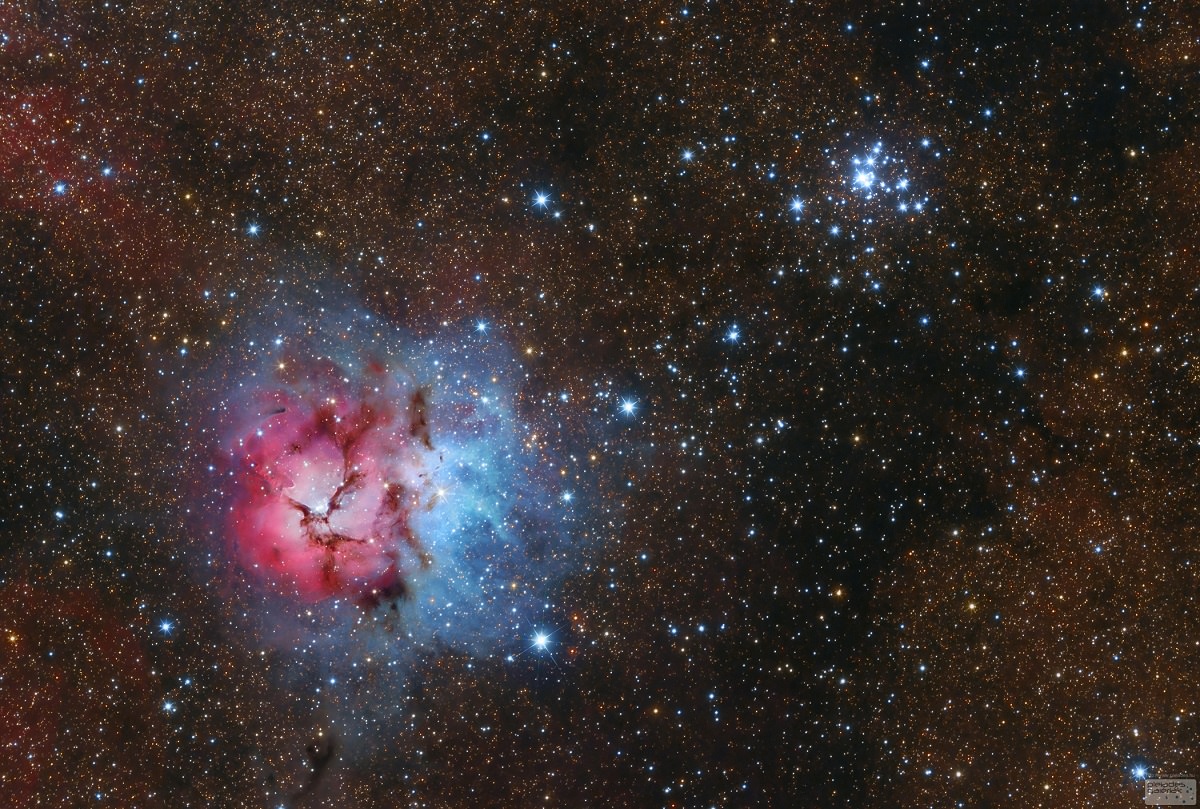
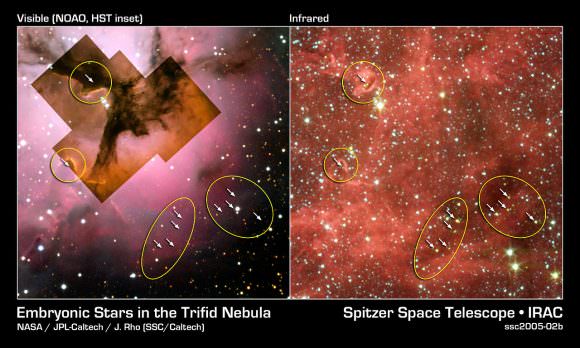
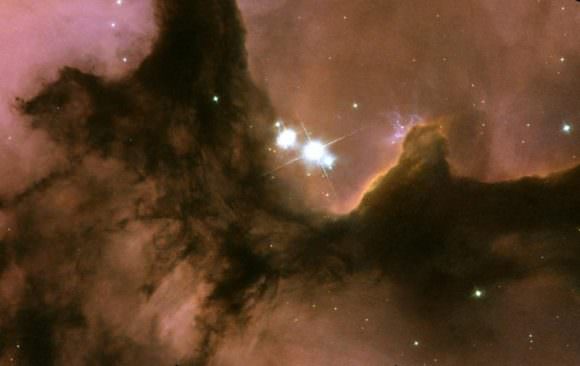
![The Trifid nebula (M20, NGC NGC 6514) in pseudocolor. Image taken with the Palomar 1.5-m telescope. The field of view is 16’ ´ 16’. Red shows [S II] ll 6717+6731. Green shows Ha l 6563. Blue shows [O III] l 5007. The WFPC2 field of view is indicated. Image: Jeff Hester (Arizona State University), Palomar telescope.](https://www.universetoday.com/wp-content/uploads/2009/06/Trifid-Nebula-M20-e1469471610624-580x515.jpg)
